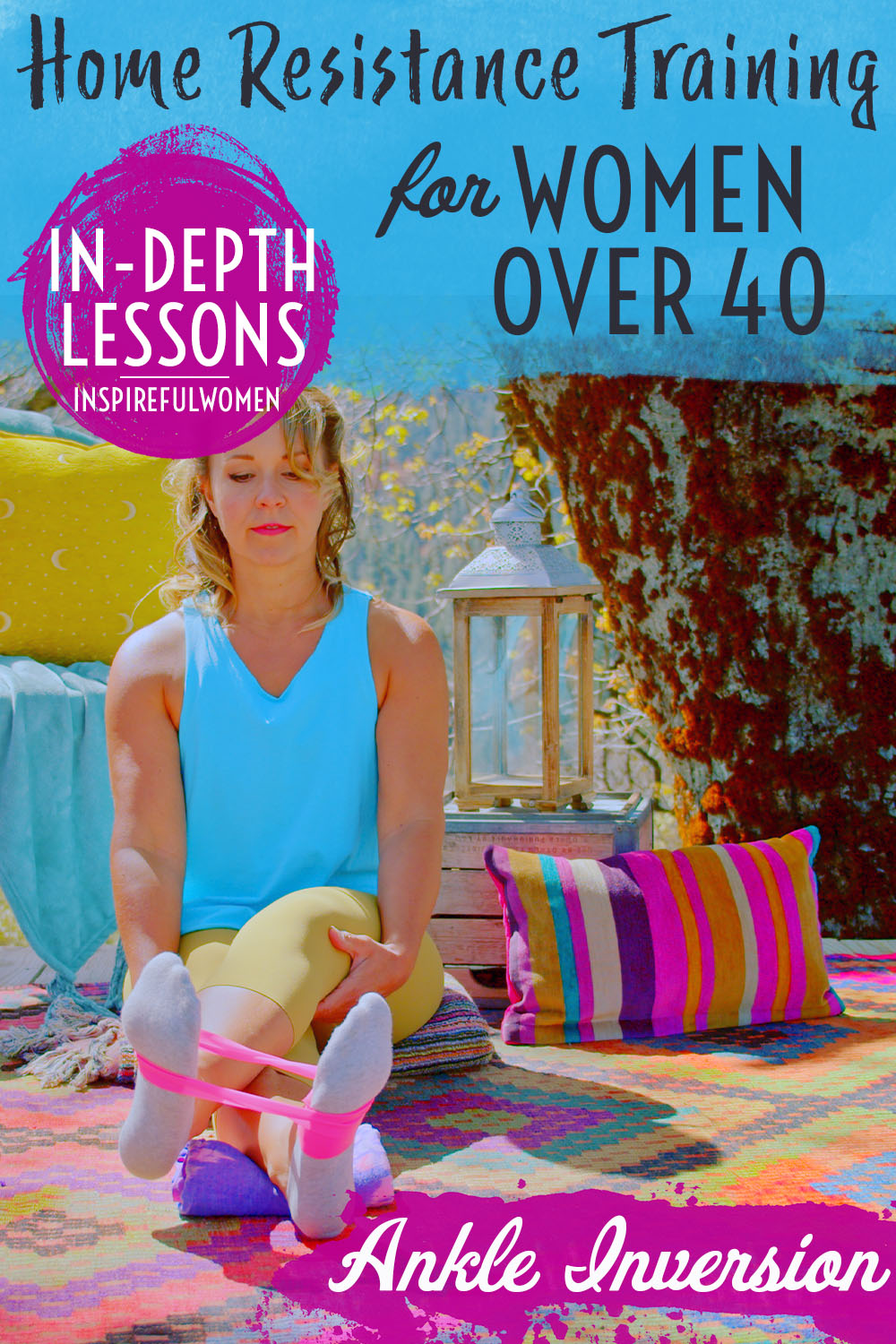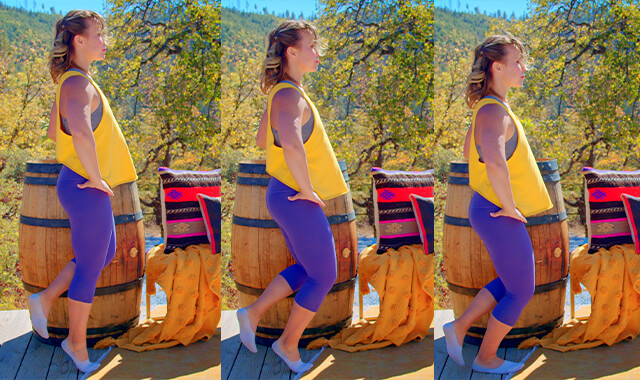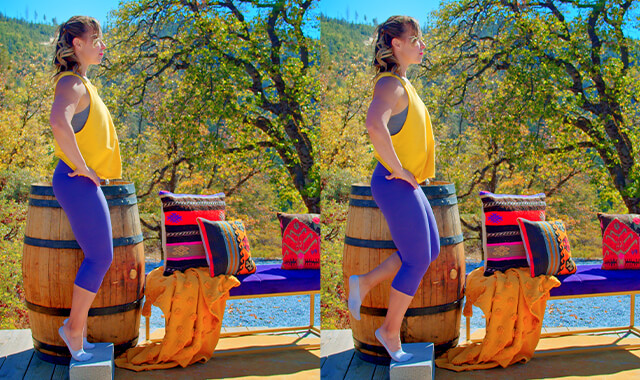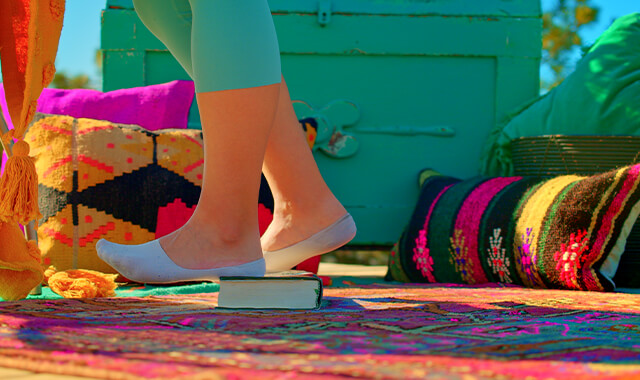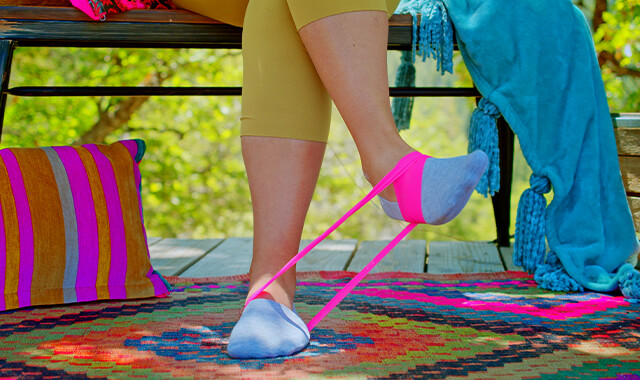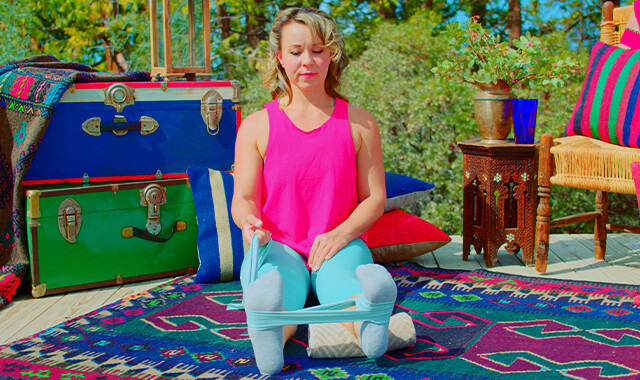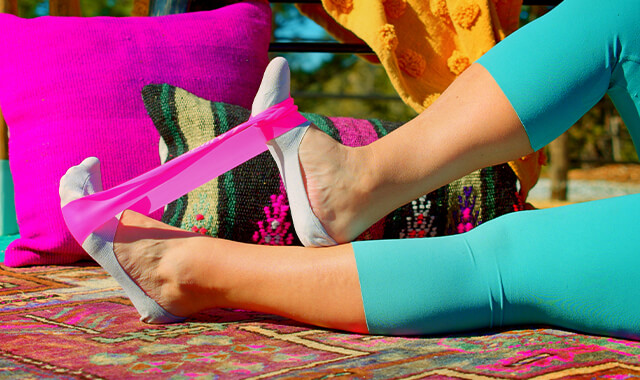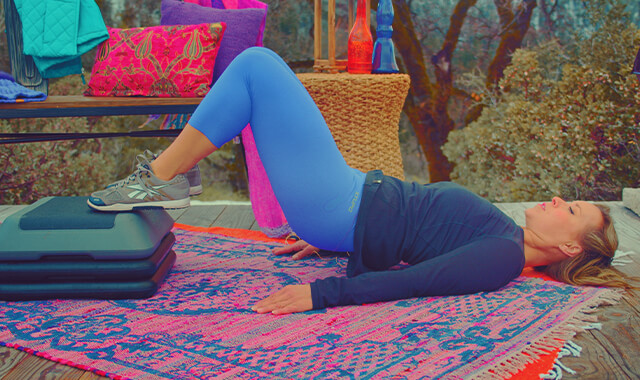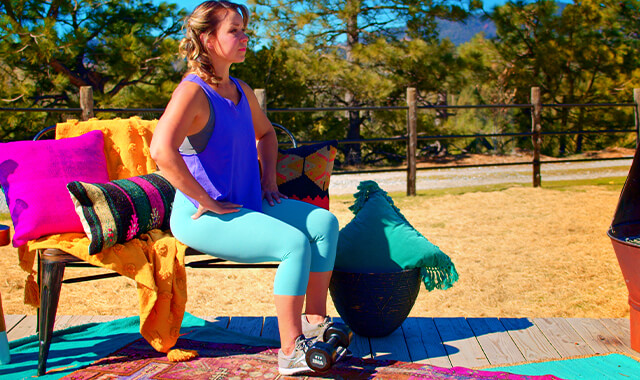Floor Band Ankle Inversion
How to Do The Floor Seated Band Ankle Inversion - Foot Mobility Exercise | In-Depth Guide [VISUAL LEARNERS] Beginner
Proper Form, Common Mistakes, & Variations | Home Resistance Training
WHAT DO YOU WANT TO SEE?
QUICK DEMO
QUICK DEMO
MUSCLES THIS WORKS
MUSCLES
MAIN MUSCLES WORKED IN the Floor Band Ankle Inversion
Tibialis Posterior & Tibialis Anterior
OTHER MUSCLES WORKED:
- Extensor hallucis longus
WHAT WE'RE DOING TODAY
WHAT & WHY
BENEFITS OF TRAINING THE lower leg muscles
WHAT
WHAT WE'RE DOING TODAY
ALL WE'RE DOING:
Turning our foot inwards, using a mini band.
This easy foot strengthening exercise can be done at home with only a mini band. This is an effective exercise for improving ankle mobility and flexibility, which can reduce the risk of ankle injuries.
The ankle and foot are incredibly mobile and also stable. They are capable of supporting all of your weight, even on one foot. They are also capable of moving into many different positions. Think about walking on a gravel road. With each step, the ankle and foot need to make subtle adjustments to their position to keep you upright and balanced. In order to do this, the foot needs to be able to tilt to each side.
For example, if you are walking on the side of a hill, your feet need to tilt so that your body is upright but your feet are flat on the ground. This side-to-side motion or tilt is referred to as inversion - turning the sole of the foot inward, towards the midline of the body (or turning the sole towards the other foot), and eversion - turning the sole of the foot outward, away from the midline of the body (or turning the sole away from the other foot).
These exercises seem quite simple, but it can be challenging to do them correctly. Turning our feet in and out is not something that we consciously do during our day - it is not like lifting a heavy object or getting up out of a chair. The subtle movements of our ankles and feet are not something that we normally think about.
Ankle inversion exercises can be done seated on the floor or in a chair with the legs out straight. It is easier to get the right form when you sit on the floor because your leg is supported by the floor. Putting a folded towel under your ankle will lift the foot so that it does not have to move against the friction of the floor.
WHY BOTHER DOING IT?
WHY
WHY DO WE EVEN CARE?
WORK THE LITTLE MUSCLES THAT HOLD UP YOUR WHOLE BODY
The feet and ankles are the foundation for standing and all upright movement. Considering the size of the feet and the ankles compared to the rest of our body, it seems amazing that they are able to support the body’s weight, especially when you stand on just one foot. There are muscles that cross the ankle joint on the front, back, and both sides of the ankle that work to move and stabilize the ankle joint, and there are also many strong ligaments and fascia to help.
IMPROVED AWARENESS & CONTROL OF OUR FEET
One great benefit of exercises for inversion and eversion of the foot is an improved awareness of the control we have over our feet. It seems that people are led to believe that the way their foot lies when they stand and walk is something that is beyond their control. They may have been told that they have flat feet or that they pronate. Although some of this is genetic, you have a great deal of control over your feet. The feet are made up of 28 bones that form 25 joints, controlled and supported by 29 muscles (roughly - the count can be different depending on the source).
These joints and muscles are no different than the joints and muscles in the other parts of the body. You can learn how to move them and strengthen the muscles to keep your feet healthy and strong. The muscles that move the sole of the foot in (inversion) and out (eversion) are very important for keeping a nice arch in your foot while standing, and for the movement of the arch for shock absorption to protect the body from high impact.
SLOW DOWN AGE-RELATED CHANGES THAT AFFECT A VIBRANT LIFE
There are many age-related changes that occur in part because of the changes in the ankles and feet. There is a progressive decline in our ability to balance, an increased risk for falls, slower walking speed, and shorter step length. The health of the feet and ankles plays a big role in all of these. The joint mobility and muscles of the toes, foot, and ankle play a huge role in balance, the ability to recover from a trip or slip, and our walking speed and step length. With age, the muscles of the lower leg get weaker and the ankle joint gets stiffer.
The good news is that if you do the right exercises, you can slow or prevent these changes. One of the best things about adding lower leg exercises is that you develop an awareness of the muscles and how your feet, ankles, and lower leg move during simple daily activities.
EVERYDAY LIFE
EVERYDAY LIFE &
MUSCLE FUNCTION
HOW WE USE OUR lower leg MUSCLES IN EVERYDAY LIFE
1. CONTROLS THE POSITION OF THE FOOT TO KEEP US UPRIGHT
- Walking, especially on uneven surfaces
- Standing on an unstable surface- helps to maintain the medial arch of the foot and prevent pronation
2. WORKS WITH THE OTHER MUSCLES OF THE LOWER LEG FOR BALANCE AND ANKLE JOINT STABILITY
- Standing
- All upright activity
3. HELPS TO SUPPORT AND MOVE THE ARCH OF THE FOOT
- Absorbs shock during walking and running
- Healthy positioning and moving of the foot and ankle to protect the toes, foot, ankle, knee, hip, and low back from uneven stresses that result in degenerative changes or injury
STARTING POINTERS
Starting Pointers
This is a straightforward exercise, but it is an odd movement and a lot of people have trouble doing it correctly. When you are learning to do the exercise, remember that the movement is not very big and you are moving your foot without any movement of the leg. Think of turning the foot so the entire sole of the foot is facing the opposite leg.
This exercise is done on the floor, sitting with the legs out straight in front of you. If this position is not comfortable for you, put your back against the wall, bend the “non-working” leg, and/or sit on a folded blanket. You can also do the exercise sitting in a chair, but it is a little more difficult to isolate the movement to the foot, and to move the foot against the friction of the heel on the floor.
HOW TO FEEL WHAT MUSCLE IS WORKING
How to Feel What Muscle is Working
When sitting, lift the leg off the floor a few inches. Keep the lifted foot close to the lower leg that is still on the floor. Bend forward and place one hand on the front of the shin (of the lifted leg), just a little bit towards the outside of the lower leg - about halfway between the knee and the ankle - this is the anterior tibialis. Place your other hand on the inside of the lower leg about halfway down - this is the posterior tibialis. Keeping the legs close together and very still. Turn the sole of the lifted foot so that it is facing the other lower leg. Think of turning the little toe towards the other leg and turning the foot so the big toe is higher than the little toe. You should feel both muscles contract.
HOW TO DO THE EXERCISE
LOOKS
HOW Floor Seated Ankle InversionS SHAPE OUR BODY
Tones and shapes the lower legs and ankles. Helps maintain a nice arch in the foot (prevents flat feet).
PROPER FORM
PROPER FORM: Floor Seated Ankle Inversion - MINI BAND
EQUIPMENT, SETS & REPS
EQUIPMENT
Mini Band
The standard mini-bands are about a 12" loop- which is actually too big for a lot of exercises to be effective (I mean, they'll do, but if you can....)
These are better & you'll be less annoyed:
10" loop mini-bands
9" loop mini-bands
9" loop mini-bands
If you buy 1 set, get the 9" size. I honestly recommend getting both. They're affordable & give you a lot of versatility to find the right stretch & resistance for a variety of exercises.
If these aren't currently for sale, you will need to search specifically for 9-inch or 10-inch mini bands. If you just search mini bands all you'll ever see are the 12" ones.
Optional folded towel, or small pillow.
SUGGESTED STARTING WEIGHT FOR WOMEN:
Moderate resistance
SETS & REPS:
2 sets of 15 reps.
PACE:
Slow control out and in.
BODY POSITION
BODY POSITION FOR THE Floor Seated Ankle Inversion
BAND: Anchor the band close to the floor, on the side of your working foot. Line up the anchor with your foot - straight out to the side.
BODY: Sit on the floor. Spine in neutral - earlobes over your shoulders and over your hips. If you have trouble keeping your spine in neutral, place your back against a wall or sit on a folded blanket.
LEGS: Straight out to the front, knees facing up to the ceiling. Place a folded towel under the calf/ankle of your working leg - the goal is to lift your heel off the floor about one inch so that the friction between the floor and your heel will not interfere with the movement.
FEET: Band looped around the midfoot/arch of your working foot - loop the band around your foot twice. Feet hip-width apart; Keep your ankle in neutral - not pointed down or pulled back, toes pointed up. The band should be taut in the starting position.
HANDS: Any comfortable position. It can be helpful to have them on your working leg to monitor for movement.
HOW TO DO
HOW TO DO Floor Seated Mini Band Ankle Inversions
CUE: The movement will most likely feel awkward at first. Concentrate on bending your ankle to move your entire sole - heel and toes, to face in.
Turn the bottom of your foot in, so that it is facing your non-working leg.
Control the pull in, pause at the end of the range of motion.
Control your movement as you return to the starting position.
Repeat for the desired number of reps, and turn around to complete the other side.
HOW TO SAFELY GET OUT OF THE EXERCISE
Remove the band from your foot and stand up.
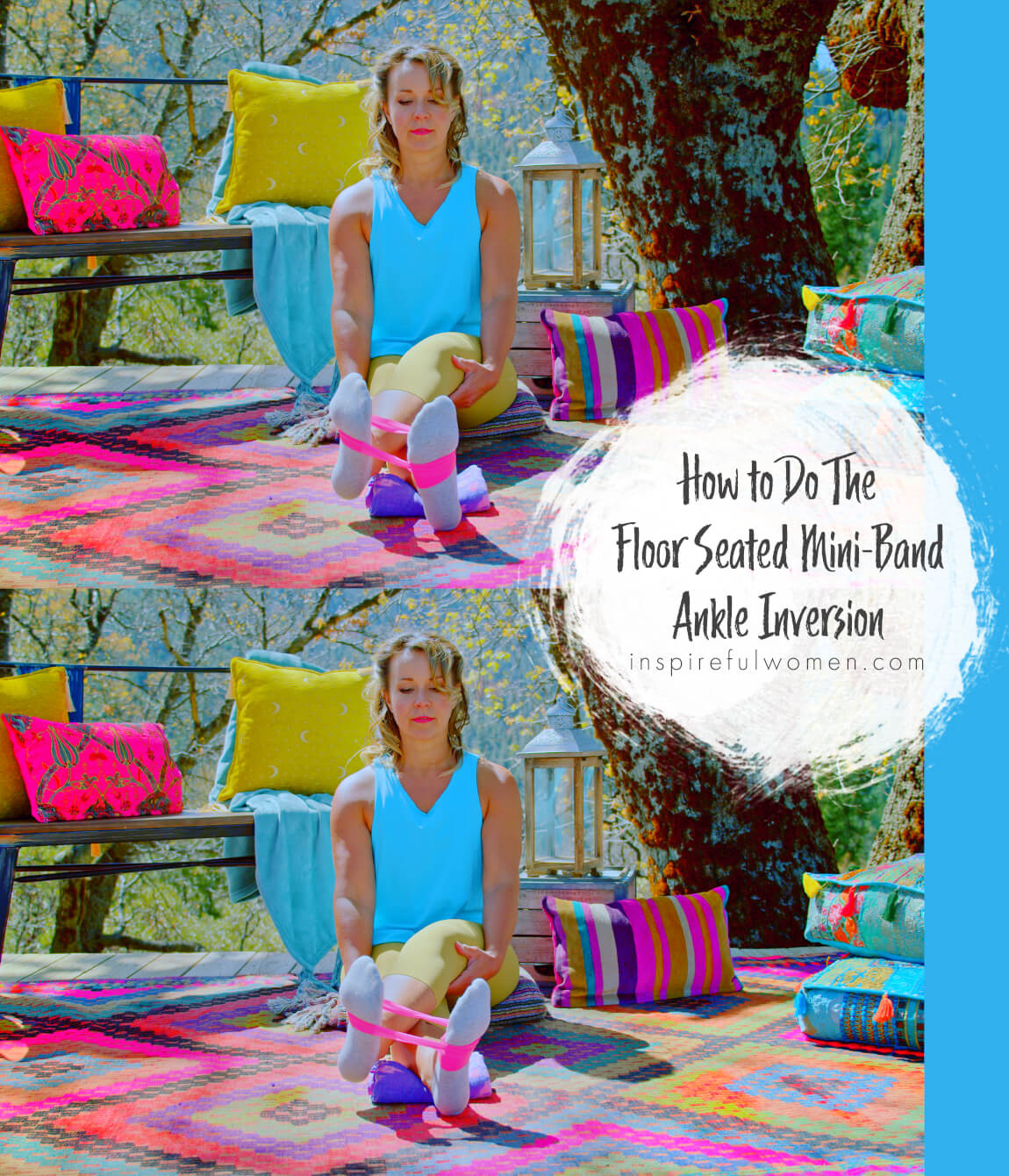
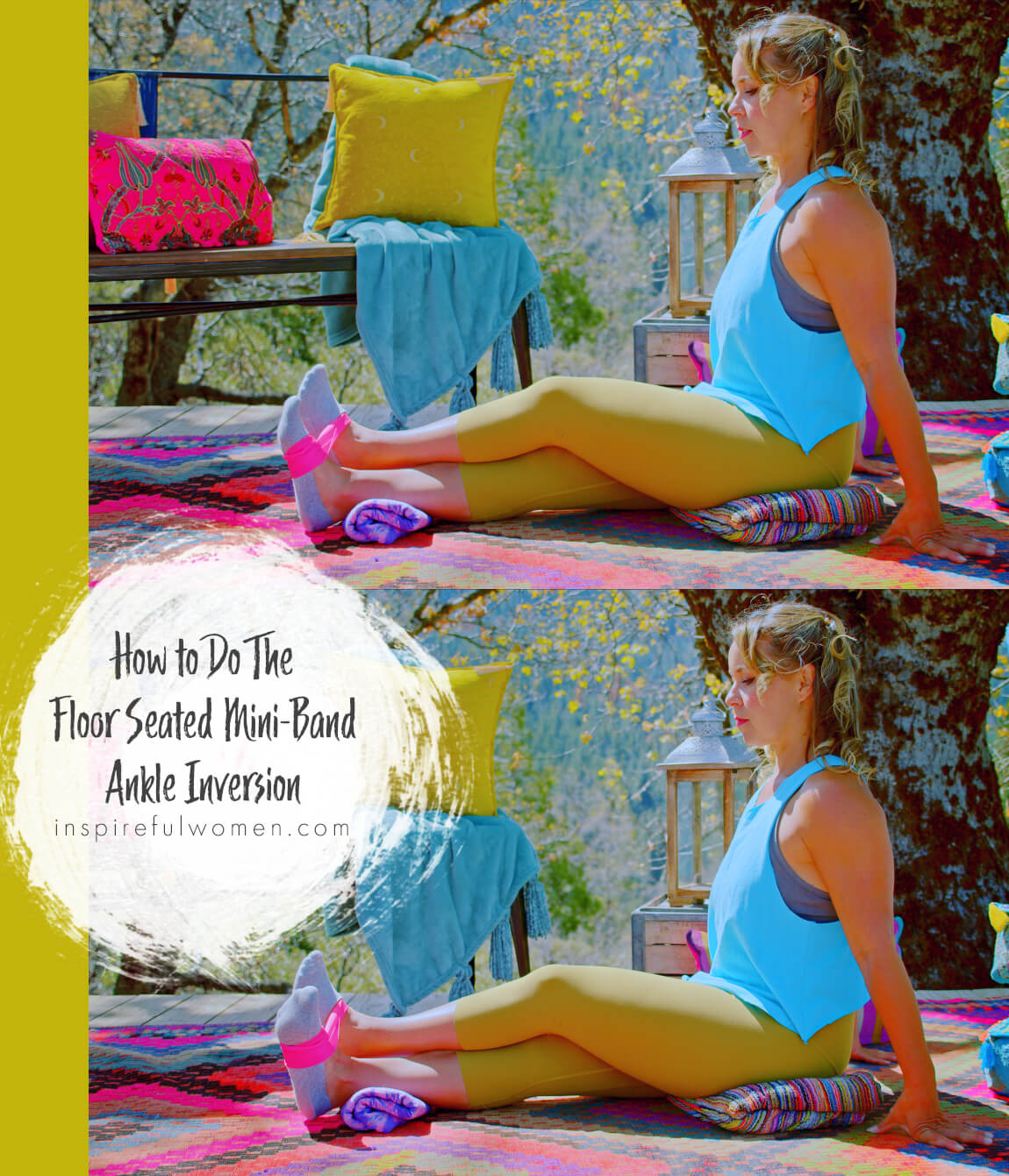
COMMON MISTAKES
COMMON MISTAKES
WHAT TO AVOID WITH THE Floor Seated Ankle Inversion
KEY TIP:
Guess what? Good news! Many avoids are the same for most movements. Once you learn the basics, there's really only a few extra avoids for each individual movement.
1. Avoid Moving Leg Instead of Ankle
AVOID: Avoid moving your leg instead of your foot
WHY NOT?
- This is the most common mistake.
- Turning the sole of the foot in is not a movement that we are used to doing, and the movement is not very big.
- It is very easy to move the leg in and out instead of the foot.
WHAT TO DO:
- Make sure to keep the knee cap pointed up and to hold the leg very still.
- Focus on very controlled movement of turning the sole in.
2. Avoid Band Pulling Foot Back
AVOID: Avoid letting the band pull the foot back out
WHAT TO DO:
- Turning the sole of the foot in (concentric), and controlling the movement back to the starting position (eccentric), are equally important.
SCIENCY STUFF
SCIENCY STUFF
SPIFFILICIOUS FACTS ABOUT MUSCLES & MOVES
The “ankle joint” is actually made up of many different joints, it is a very complex structure made up of many bones and ligaments. All of the muscles of the ankle and foot cross more than one joint. Slight changes in the position of the foot can change the action of the muscles.
The tibialis posterior lies along the back of the tibia and fibula and inserts onto the bones of the midfoot - the navicular, cuneiforms, cuboid, and the bases of all of the metatarsals except for the first one. The muscle adducts and inverts the foot, and can also help with plantarflexion.
The tibialis anterior originates on the lateral side of the front of the tibia and inserts onto one of the smaller bones between the ankle and the foot (medial cuneiform), and the base of the first metatarsal - the long bone that runs along the top inside of the foot. The main action of the tibialis anterior is to dorsiflex and invert the foot. It also plays a big role in supporting and moving the medial longitudinal arch of the foot.
The extensor hallucis longus’ primary action is to extend the big toe, but it can also help with dorsiflexion and inversion of the foot.
ALL MUSCLES & WHEN
ALL MUSCLES WORKING & WHEN DURING THE Floor Seated Ankle Inversion
The tibialis anterior, tibialis posterior, and extensor hallucis longus contract concentrically to invert the foot. The same muscles work eccentrically to control the return to neutral against the pull of the band.
PIN IT FOR LATER!

